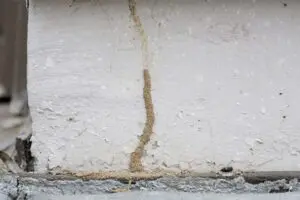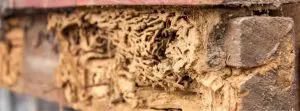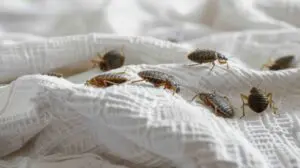
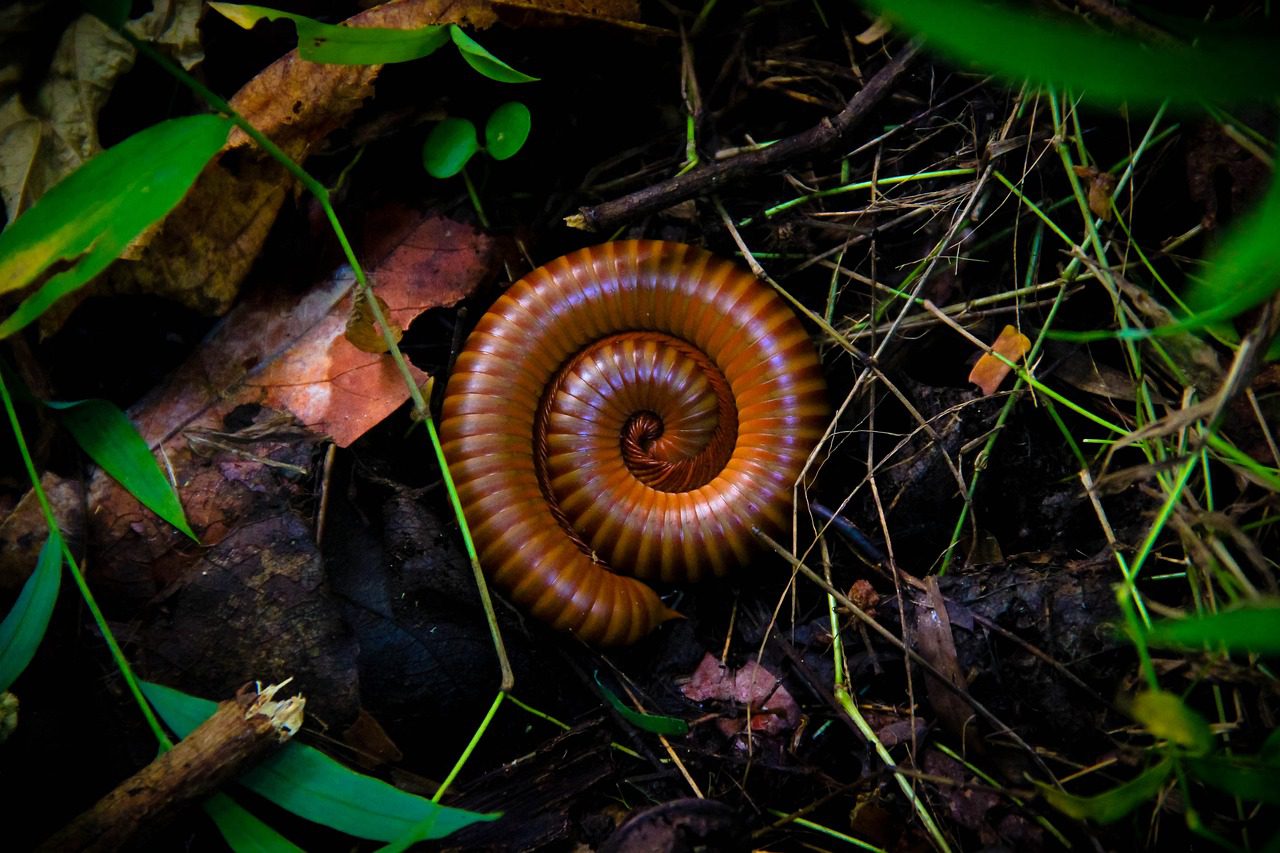
Florida Millipedes: Tips For Identification and Prevention
Discover the presence of millipedes in Florida and uncover effective prevention strategies. This article guides you through understanding millipede behavior and implementing measures to keep them at bay. Learn practical tips to safeguard your property against millipede invasions, ensuring a pest-free living space in the Sunshine State.
Florida Millipede Diversity: Identification and Types
Florida is home to various millipede species, with some notable ones exhibiting distinct colors. The Florida Ivory Millipede (Chicobolus spinigerus) is black with red legs, while the Florida Megaphyllum Millipede (Narceus gordanus) is characterized by its black body and vibrant yellow bands. Additionally, the colorful Florida Scarlet Millipede (Apheloria virginiensis) stands out with its striking red and black coloration. These millipedes play essential roles in ecosystems, aiding in decomposition processes. While their vibrant appearances serve as a form of aposematism, warning predators of potential toxicity, it's crucial to appreciate these fascinating arthropods in their natural habitats.
Spotting Florida Millipedes: Identification Tips
Differentiating between Florida’s millipede species can be made simpler by focusing on these characteristics:
- Coloration: Observe distinct color patterns on their bodies.
- Size: Note variations in length, as species differ in size.
- Leg Segments: Count the number of leg segments, a characteristic feature.
- Habitat: Consider where you find them; habitat preferences vary.
- Behavior: Watch for unique behaviors, like defensive postures.
- Antennae: Examine antennae shape and length, which can differ among species.
- Patterns: Look for specific markings or patterns on their exoskeletons.
- Local Guides: Consult local field guides or experts for accurate identification.
Black and Yellow Millipede Behavior and Bites
Black and yellow millipedes, such as the Florida Megaphyllum Millipede, are generally docile creatures with fascinating behaviors. They play vital roles in ecosystems by aiding in the decomposition of organic matter. When threatened, these millipedes employ various defense mechanisms, including the secretion of toxic chemicals to deter predators. Their coloration serves as a warning to potential threats, signaling their unpalatability.
These millipedes are primarily detritivores, feeding on decaying plant material and organic debris. Despite their numerous legs, they move slowly and deliberately, utilizing their many body segments for locomotion. When disturbed, they may coil into a defensive posture, protecting their more vulnerable underside.
While millipedes are not aggressive and do not bite, they may release a noxious substance if handled or threatened. This defensive secretion contains chemicals like hydrogen cyanide, which can cause irritation or harm to predators. It's essential to appreciate these millipedes from a respectful distance in their natural habitats, allowing them to contribute to the ecosystem without disturbance.
Florida Millipede Seasonality: Are They Seasonal?
Millipedes in Florida often exhibit seasonal activity patterns influenced by environmental factors. Generally, their activity is more noticeable during periods of higher humidity, as these arthropods are sensitive to desiccation. In Florida, the wet season, typically from late spring to early fall, provides favorable conditions for millipedes. Increased moisture encourages their movement and reproductive activities.
During the wet season, millipedes become more active in search of food and suitable mates. They may also be observed in larger numbers, especially in areas with abundant organic matter. However, extreme weather events, such as heavy rains or flooding, can disrupt their activities.
In contrast, during drier and cooler periods, millipede activity may decrease. They may seek refuge in burrows or under leaf litter to avoid dehydration. Some species may enter a state of dormancy or reduce their metabolic rate to conserve energy.
What Increases Millipede Populations?
Millipede populations in Florida can be influenced by several factors that contribute to their proliferation. One significant factor is the region's warm and humid climate, providing an ideal environment for millipedes to thrive. These conditions support the decomposition of organic matter, creating a rich substrate on which millipedes like to feed. Abundant organic debris, such as fallen leaves and decaying vegetation, serves as a plentiful food source for millipedes, promoting population growth. Human activities, such as landscaping practices and the accumulation of organic material in gardens, can inadvertently create favorable habitats for these arthropods.
Moreover, the periodic rainfall in Florida significantly impacts millipede populations. The wet season provides optimal humidity levels, encouraging increased millipede activity and reproduction. The absence of natural predators or the limited impact of control measures can also contribute to population growth. While certain animals, like birds and ground beetles, may feed on millipedes, their populations are often not sufficient to keep millipede numbers in check.
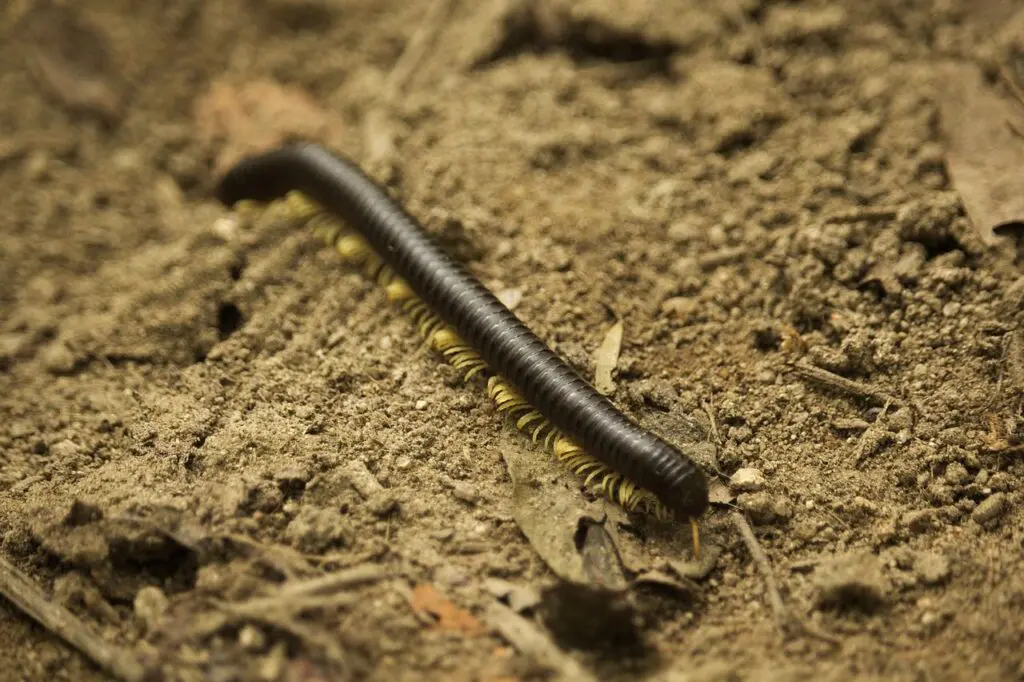
Are Florida Millipedes Poisonous?
Florida millipedes, including species like the Florida Megaphyllum Millipede, possess defensive glands that can produce a noxious substance containing chemicals like hydrogen cyanide. While this secretion is toxic and serves as a deterrent against predators, it is not considered harmful to humans. That being said, direct contact with millipedes may cause skin irritation for some individuals. It is essential to handle these arthropods with care.
Florida Millipede Control: Tips and Tricks
To remove and prevent millipede infestations in Florida, follow these steps. First, eliminate excess moisture around your home, as millipedes are attracted to damp environments. Ensure proper drainage, fix leaks, and use dehumidifiers in crawl spaces. Remove organic debris like leaves and mulch near the foundation to reduce potential hiding spots. Create a barrier by applying insecticides or desiccant dusts along the perimeter of your home, focusing on entry points like doors and windows. Seal cracks and gaps in doors, windows, and the foundation to deny millipedes access. Consider using weather-stripping to enhance seals.
If an infestation occurs, manually remove millipedes using a vacuum or broom and dustpan. Dispose of them away from your home. Alternatively, create traps using dampened towels or boards to attract and collect millipedes. Natural predators, like ground beetles and birds, can help control populations. Encourage these predators by providing suitable habitats. Regularly inspect and maintain your property to catch and address issues early. If the infestation persists, consult with a pest control professional for targeted solutions.
Understanding and implementing effective millipede management is crucial for maintaining a pest-free property in Florida. By adopting preventive measures and seeking professional assistance when needed, you can ensure a comfortable living space. For tailored solutions, contact us today. Let our experienced team at Excel safeguard your home or business against millipede invasions. Your peace of mind is just a call away!




